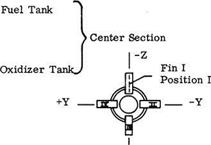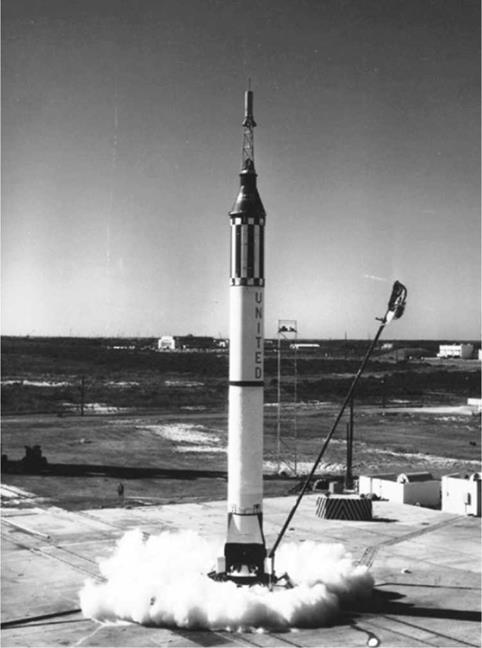MR-1A FLIES
Within a week, a new test flight had been scheduled and designated MR-1A. While a replacement Redstone rocket would be used, it was felt that since Spacecraft No. 2 was still in good condition, after a little renovation it could be reused on the MR-1A mission with an antenna fairing borrowed from another capsule and straddled by a replacement escape tower.
Although some damage had occurred to the Redstone booster’s tail assembly, engineers agreed that it could be refurbished. It was therefore crated up and shipped off to the Marshall Space Flight Center in Huntsville, where it was held in reserve until the conclusion of the Mercury-Redstone program. However, the MR-1 rocket would never actually be used and was placed on display at Space Orientation Center there.
On 8 December 1960, Spacecraft No. 2 was hoisted upward for a second mating with a Redstone launch vehicle at Cape Canaveral. It was essentially the same 2,400- pound capsule, apart from a few replacement parts and some minor modifications in areas such as the launch escape tower and the parachute deployment system.
As before, the pre-flight testing proceeded very smoothly and, with everything in order, the launch was set for 19 December. Early that morning, strong winds gusting to 150 knots aloft obliged a 40-minute hold. Next, a leak in a high-pressure nitrogen peroxide solenoid valve in the capsule caused another delay of 3 hours 15 minutes [11].
Separation Ring Adapter
![]()
![]()
![]()

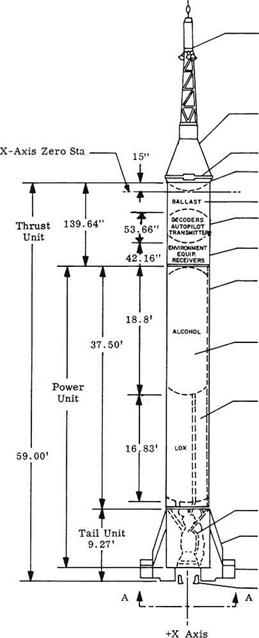 Ballast Section
Ballast Section
![]() Instrument Compartment l Aft geotion
Instrument Compartment l Aft geotion
|
|
+Z
View A-A
Rocket Engine Fins
Rudders Jet Vanes
A schematic drawing of the Mercury-Redstone launch vehicle. (Photo: NASA)
|
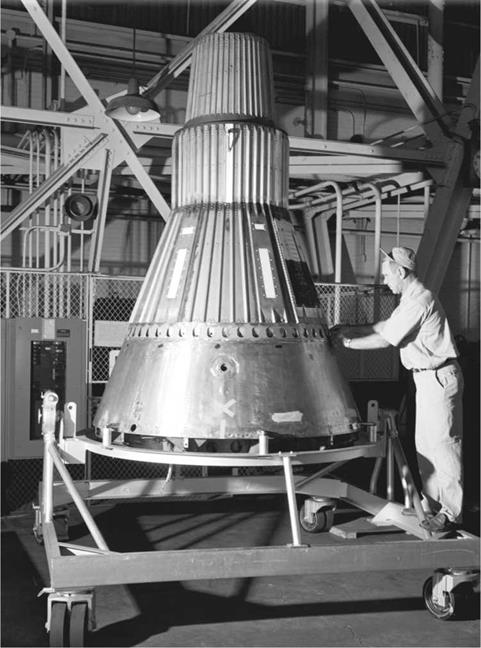
As on previous launches, the seven Mercury astronauts somewhat apprehensively looked on as the 83-foot stack of the escape tower, spacecraft, and booster lifted off from Pad 5 of Launch Complex 56 at 11.15 a. m. (EST). Two of the astronauts, Deke Slayton and Gus Grissom, were observing from the cockpits of their airborne F-106 jets, ready to follow the ground track of the Redstone for a short time and hopefully photograph the capsule descending on its parachute over the recovery area.
This time everything went smoothly; following the ignition command issued from the blockhouse, smoke billowed from beneath the rocket and MR-1A lifted slowly off its pedestal into a clear sky, accelerating as it climbed. A brilliant trail of flame traced the sleek Redstone’s course as it streaked up and tilted toward the southeast, out over the Atlantic Missile Range. Seconds later, Slayton and Grissom ripped over the Cape in their F-106s, flying in the same direction at nearly twice the speed of sound. Observers at the Cape could just make out the booster shutdown and capsule separation 143 seconds after launch.
Throughout the capsule’s flight all of the systems functioned well, although the booster’s velocity was 260 feet per second faster than expected at around 4,200 miles an hour, causing it to ascend seven miles higher than the predicted 128 miles. This, and high tail winds of almost 100 m. p.h., caused the separated spacecraft to travel 15 miles further downrange than expected. NASA said the bell-shaped capsule floated down by parachute into the ocean about 16 minutes after liftoff. It was first spotted approximately 90 miles northeast of Grand Bahama Island and eight miles from the prime recovery vessel, the aircraft carrier USS Valley Forge (CV-45).
The helicopter recovery pilots were Lt. Wayne Koons of Lyons, Kansas and Capt. Allen Daniel, Jr., of Greenwood, Mississippi. Both were members of Marine Air Group 252, which was based at Jacksonville, North Carolina. Their H-34 left the Valley Forge and flew over to the floating capsule, hooked on to its recovery loop, and hoisted it from the sea at 11.46 a. m., 31 minutes after it was launched. They flew back to the ship with their precious cargo and carefully deposited it on the carrier’s flight deck at 12.03 p. m.
Following the successful recovery operation, the Valley Forge steamed to a point off Cape Canaveral within several hundred yards of the test center, then Koons and Daniel lifted the capsule and delivered it to the test center. It would later be taken to Langley Field, Virginia to be studied by technicians, engineers and scientists.
A preliminary examination revealed only minor damage to the spacecraft. The painted letters “United States” on the side had been slightly scorched by the 600-degree heat of reentry. One of the three thicknesses of glass on a small side porthole was broken, but a NASA official suggested to reporters that this could have occurred during the recovery operation. As if to demonstrate it was still functioning well after its flight into space, a bright flashing light designed to aid recovery still winked atop the nine-foot capsule.
The Director of NASA’s Marshall Space Flight Center, Wernher von Braun, was delighted by the successful flight, and said that “everything was right on the money.” Meanwhile Robert Gilruth, in charge of the Space Task Group, called the launch an “unqualified success.” However, he cautioned that it did not indicate an immediate
|
A successful launch begins the MR-1A mission. (Photo: NASA) |
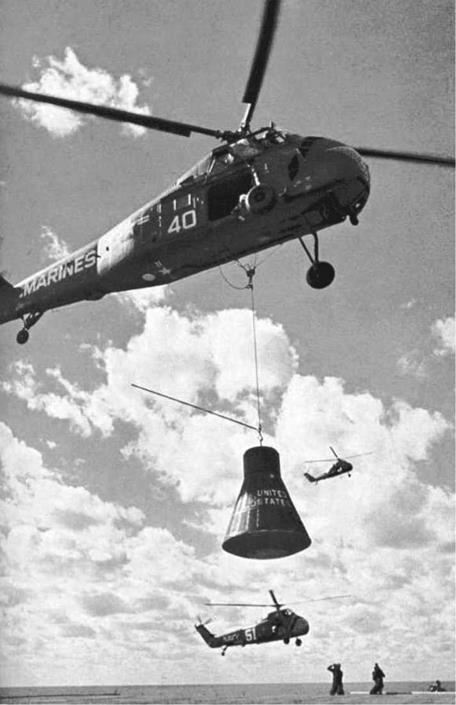
|
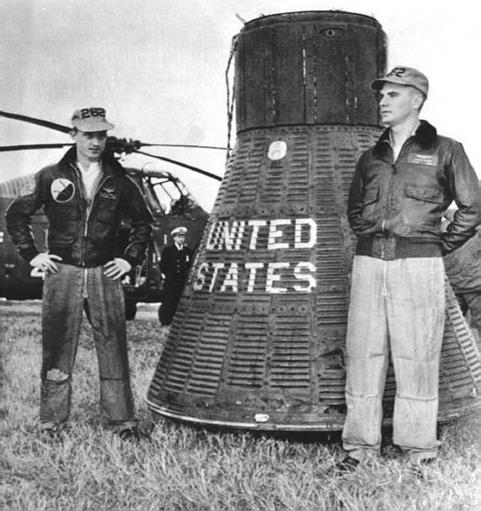 – f
– f
On 19 December 1960 U. S. Marine helicopter crew Capt. Allen K. Daniel, Jr. (left) and 1st. Lt. Wayne Koons plucked the unmanned MR-1A capsule from the Atlantic after a successful 16-minute ballistic test of its systems. (Photo: Associated Press)
readiness to send a man into space. He said more flights would be needed to qualify the reliability and operation of the system, and that the next launch, expected within a month or two, might carry a chimpanzee [12].
The performance required of the Redstone rocket for the first phase of the manned space flight program had been established. It had demonstrated both the reliability and the performance needed to place the Mercury spacecraft safely into a suborbital trajectory. However, as McDonnell Pad Leader Guenter Wendt pointed out, even as their proficiency and confidence grew in safely launching rockets, there remained a great many lessons to be learned.
“All the rules changed quite a bit. At the same time, there was a lot of stuff we just plain didn’t know. No one had done it before. For example, we had an escape rocket on top of the capsule. It was neatly protected with plastic that we had wrapped around it. It was great to keep the rain out. Then one day we had some Air Force people who had a satellite in a spin test facility – they spun the satellite while it was wrapped in plastic, then upwrapped it – and the satellite blew up. Static electricity. The Air Force told us the kind of plastic they’d used. It was the same kind I used on the escape rocket. Whoops! This is when you learn the hard way.” [13]











